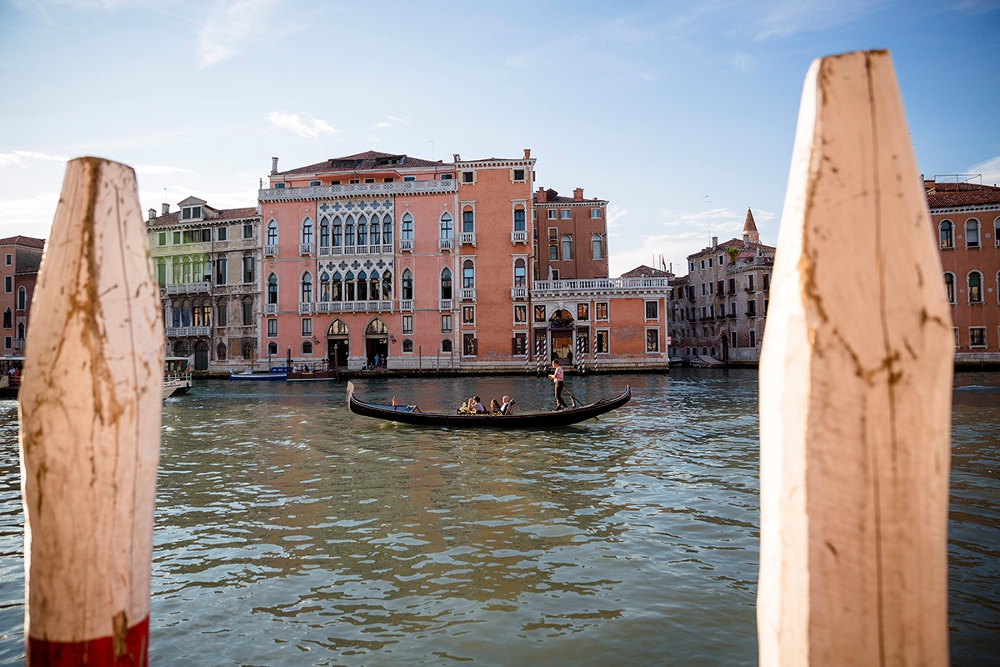
BEAUTY, CURIOSITY, HARMONY AND ESPECIALLY REBIRTH : THESE
CONCEPTS INSPIRE OUR MAGAZINE, SHARING SPECIAL MOMENTS
AND CARVING OUT A NICHE FOR YOURSELF.
GO TO YOUFIRST.EU AND BUY OUR PRODUCTS
SELF MOMENTS
#8 Palazzo Fortuny

Venice is unique and visiting it is a gift for the soul, but it is also an increasingly crowded city and this can make it at times chaotic. Here is a suggestion to escape the crowd: the Fortuny Museum. A splendid palace that overlooks a small and quiet square, Campo San Beneto, few steps away from San Marco but incredibly peaceful. Built by Benedetto Pesaro in mid-fifteenth century, the building shows a traditional Venetian architecture and hosted many memorable celebrations by the Compagnia della Calza honoring princes, ambassadors and nobles. In 1898 it became Mariano Fortuny y Madrazo’s home. He was attracted by this architectural beauty and he began a precious work of recovery, enriching itwith a great library, paintings and fabrics. After the death of Fortuny in1949, the building was donated to the City of Venice in 1956, to use it as a cultural centre. It is a house-museum dedicated to visual arts since 1975. Until October 10th it is possible to visit the interesting exhibition on contemporary collecting “Quand fondra la neige où ira le blanc?”[When the snow melts, where does the white go?]. A reflection on identity, an invitation to carve out an intimate and silent moment, for a real Rebirth.
Palazzo Fortuny
Campo S. Beneto, 3780, Sestiere San Marco, Venezia
fortuny.visitmuve.it
TALES IN MILAN
#8 |...a trip in Venice: Palazzo Pisani Moretta

This historic Venetian palace, a jewel on the Grand Canal, hosted the special party honoring the film "The Light Between Oceans", whose athmosphere was even more magical thanks to the essences and the lights of YouFirst Pura Rinascita's candles. Built in the second half of the fifteenth century by Bembo, the building became home to a branch of the noble family Pisani, the Pisani Moretta: several expansions and restorations finished in the mid XVIIIth Century when the last important works which gave it its present day appearance were completed. The facade of the building is an example of floral Venetian Gothic style, while the interior is in baroque and neoclassical style and dates back to the XVIII century. Some wonderful works of the most important Venetian artists decorate the halls of the building: Jacopo Guarana's "Light that defeats the darkness" and "Apollo in the morning hours"and Giambattista Tiepolo's "The encounter between Venus and Mars"(1743) . Other works once housed in the palace are today transferred elsewhere, like "The Family of Darius at the feet of Alexander" by Paolo Veronese, and "Dario's death" by Giambattista Piazzetta, now at the National Gallery in London and the Museum of Ca 'Rezzonico in Venice . It has been a real privilege to enjoy this beauty, as the film transports us to another era, filling us with delight and wonder.
Palazzo Pisani Moretta, Sestiere San Polo 2766, Venezia
ALCHEMY OF REBIRTH
#7 | My kingdom for a coffee

If, as the Chinese philosopher Tien Yi-Heng, we drink tea to forget the din of the world, we have a coffee cup to face the world with indomitable grit. Rebirth often goes through a ritual, and so much has been said and written on the noble art of making tea, while, indeed, it is very underestimated that of coffee: certainly more pragmatic but no less refreshing. The Italian tradition is intrinsically linked to this dark and fascinating drink, and the majority of the population greets the morning with this ritual. Campania is up to the strictest observance of the ritual: the coffee you drink must be extremely hot, sugarless and served in the chicchera; do not even try to ask for an americano coffee and do not dare to linger threatening to cool the mystical drink, or you may risk a fight with the bartender. People living elsewhere do some variations, contaminating the purity of 'tazzulella’ with local habits: in Rome coffee is served with cream, in Milan it is always more complicated (cold or hot macchiato, single or double, in a large cup …everyone for themselves!), in Lecce the heat is mitigated with 'ice coffee’, and so on with the multiple variants typical of our beautiful peninsula, which never makes us forget the beauty of a lonely five-minute coffee break or, instead, talkative break with some colleagues or friends. In short, coffee is one of the greatest pleasures of life, harmless, carefree, very democratic but pleasing transversely.
Happy Rebirth, 100% Arabica.
SELF MOMENTS
#7 | Piet Oudolf’s private garden

If you are wandering through Europe and if you love enchanted gardens, stop in Hummelo, in Netherlands. Here lives and works one of the most important representatives of landscape design, Piet Oudolf, founder of the Movement of New Perennials, an award-winning artist because of its international projects (one of them is the green design of New York’s new highlines). This Dutch master is primarily a big nurseryman who has strived for more than thirty years for the enhancement of wild plants, selecting and classifying more new species. The deep knowledge of the life cycle and of the seasonal colors of the so-called “poor plants”, such as the grasses, led him to use them at best in its projects, creating wonderfully elegant and also very natural parks. Its green philosophy is inspired by the botanical universe as well as that of art, and it materialized in that rare and happy harmony of nature and culture that makes us proud to belong to mankind.
Piet Oudolf’s garden – Hummelo (NL)
Oudolf.com

